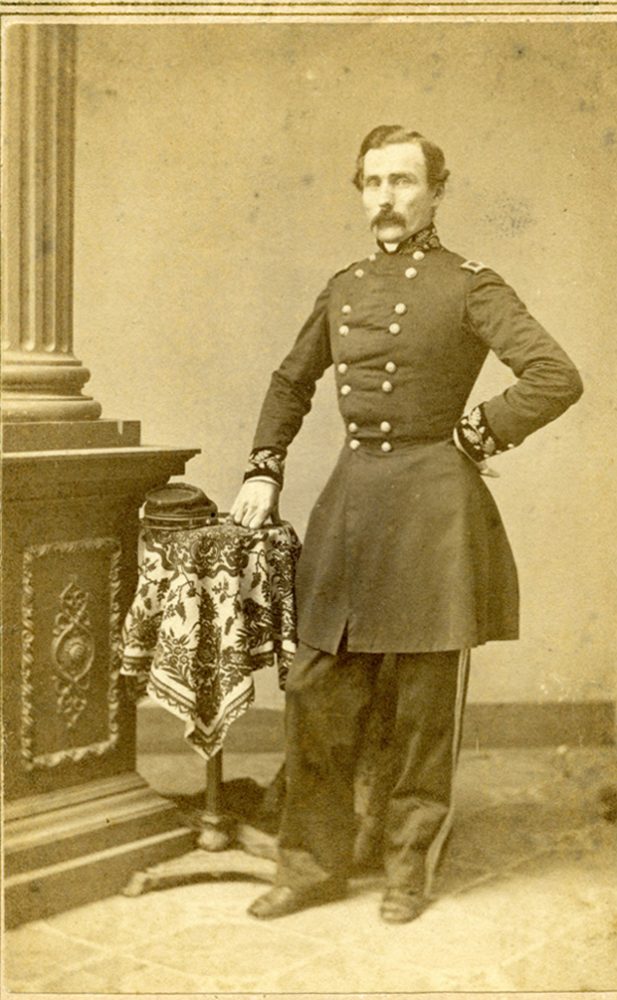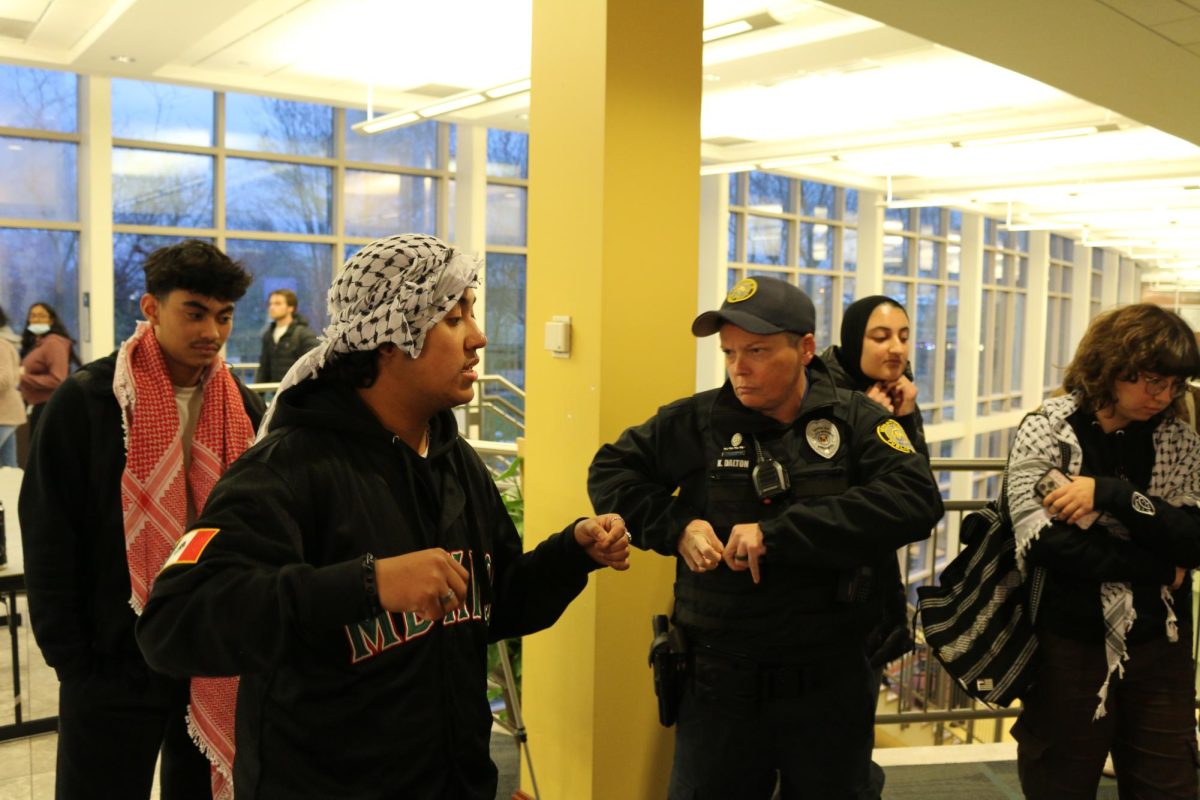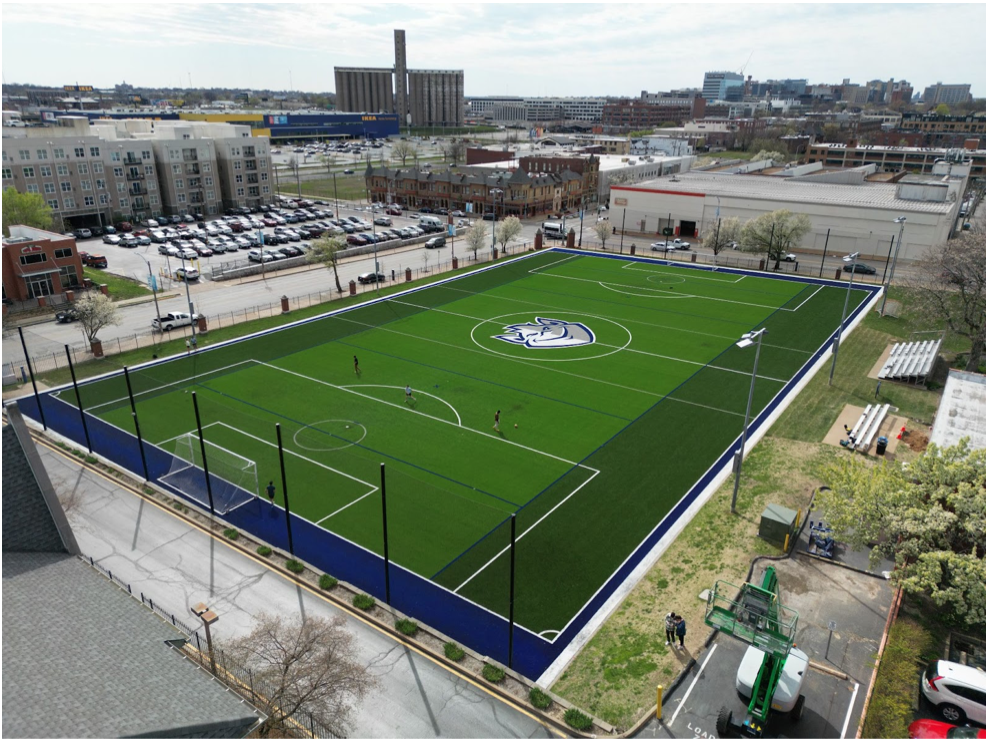While registering for classes in Banner, talking to an old professor or looking at an old map, one may encounter references to the Frost Campus. The name is symbolic for something that the university would like to move on from, and that is why it is less and less referred to as the “Frost Campus,” and now often as the “North Campus.”
The origin of the Frost Campus’ name is intertwined with the stories of the American Civil War. In 1861, the area that currently makes up the engineering school and Busch Student Center was called Lindell’s Grove.
At the time, the wooded area was home to Camp Jackson, a civil war camp named after the newly elected, pro-secession governor. General Daniel M. Frost was a strong proponent of Governor Jackson. Frost lead the Missouri Minutemen, a secessionist para-military organization.
Frost operated overtly as the Missouri Volunteer Militia, despite Missouri’s neutrality policy. Frost also secretly conspired with Governor Jackson to plan an attack on the Federal Arsenal in downtown St. Louis. Two Minutemen sought out artillery, which Confederate President Davis agreed to supply. Union Captain Nathaniel Lyon intercepted the plans and planned an arrest.
On May 10, 1861 the Missouri Volunteer Militia was arrested for receiving a secret shipment of weaponry, artillery and ammunitions from the Confederate government.
The militia was not resistant, however, and local citizens rioted at the news. A total of 28 died as a result. Another 75 were wounded.
The riot sparked the beginning of a conflict that would eventually expel Governor Jackson. After the Camp Jackson incident, Frost was paroled and joined the Confederates in the South as a major general and then as an inspector general. He abruptly left the Confederates and joined his family in Canada, who had been forced out of St. Louis for their Confederate sympathies.
After the war, Frost eventually moved back to St. Louis. He wrote a significant amount about his time in the war, contradictorily suggesting that he had never plotted against the Union but also that he had never abandoned the Confederate army.
In 1867, after the war, the university purchased Lindell’s Grove. In 1962, Harriet Frost Fordyce, daughter of Gen. Frost, donated one million dollars to the university, allowing the university to purchase 22 acres of land east of Grand Boulevard. Per her request, the campus was named in honor of her father. The area that once was home to Camp Jackson was, ironically, included in the new Frost Campus.
Although it has not been officially expressed, the administration quietly changed the name of the Frost Campus in recent years. A professor in the sociology department removed all references to the Frost Campus in his guides and rubrics, but the name came up in conversation nonetheless. Banner still refers to the main campus as Frost Campus in all of its catalog.
It is important to remember that behind every name is a story. It just so happened that the name of Saint Louis University’s main campus came from a stanch Confederate. Thus, the Frost campus is now known as the North campus.







Kate Monroe • Aug 22, 2019 at 1:24 am
Fine, SLU should give the Frost family back their blood money. This is not about “special snowflakes” being upset. This is about our country finally rejecting the dangerous and morally appalling Lost Cause propaganda.
Least we forget, the Confederacy seceded from the Union, because they wanted to keep owning slaves. Why do we, as a nation, still have such a hard time accepting this fact? The Confederacy was not some heoric and just band of good ol boys. Read Alexander Stephens’ Cornerstone Speech from 1861. Stephens, the VP of the Confederacy, expressly stated that the “cornerstone” of the Confederacy was the “truth that the negro is not equal to the white man.” The leaders of the Confederacy, in their own words, repeatedly and explicitly explained that the war was about their desire to maintain slavery.
Like Germany prohibited the swastika after the Holocaust, some past events were so terrible that some restrictions upon freedom of expression should be enacted. It is not whitewashing history or rewriting it. It is a cultural acknowledgement of a major social wrong that we, as a people, want to repudiate in the hopes that it won’t happen again.
If you want to put up a sign that explains the old campus name, fine. I, for one, definitely do not want to lose the history of the attrocity of slavery and the Civil War. It is a critical lesson that we need to remember. But SLU should not continue to celebrate and honor a traitor, who left the Union to support the ownership and torture of humans, by naming their campus after him. We should not forget Frost, but we don’t have to glorify him. There is a critical difference between REMEMBERING and HONORING.
Ultimately, names change all the time. It’s our insidious and systemic racism that makes something so obviously right (removing the Frost name) the subject of a rancorous and vitriolic debate.
Stephen M Hood • May 28, 2019 at 3:17 pm
Has the university returned the million dollars to the Frost family, plus interest? This is what happened when Vanderbilt University wanted to remove the name of a campus building named “Confederate Memorial Hall.” A lawsuit was filed and Vanderbilt paid the United Daughters of the Confederacy $2.1 million, which was the compounded value of the amount the UDC donated to the university when the building was constructed in the early 1900s.
Robert Hawkins • Apr 27, 2017 at 7:05 pm
History, done spare and empty. Imagine your local National Guard unit, which meets every year, is suddenly surrounded by the 101st Airborne and compelled to surrender at gunpoint. Imagine the Airborne’s orders are all shouted in German. Imagine the Airborne firing in volleys into the unruly crowd, killing women and children – one baby dead in its mother’s arms. Imagine William Tecumseh Sherman lying in a ditch protecting his son’s body with his cloak, from Airborne volleys. Imagine the Airborne commander (Nathaniel Lyon) at a peace conference weeks later saying he would see “you, you and you (pointing around the room) and every man, woman and child in Missouri dead and buried.” Now, let your campus Taliban amend names and events, and let your tales promote the comfy current political orthodoxy.